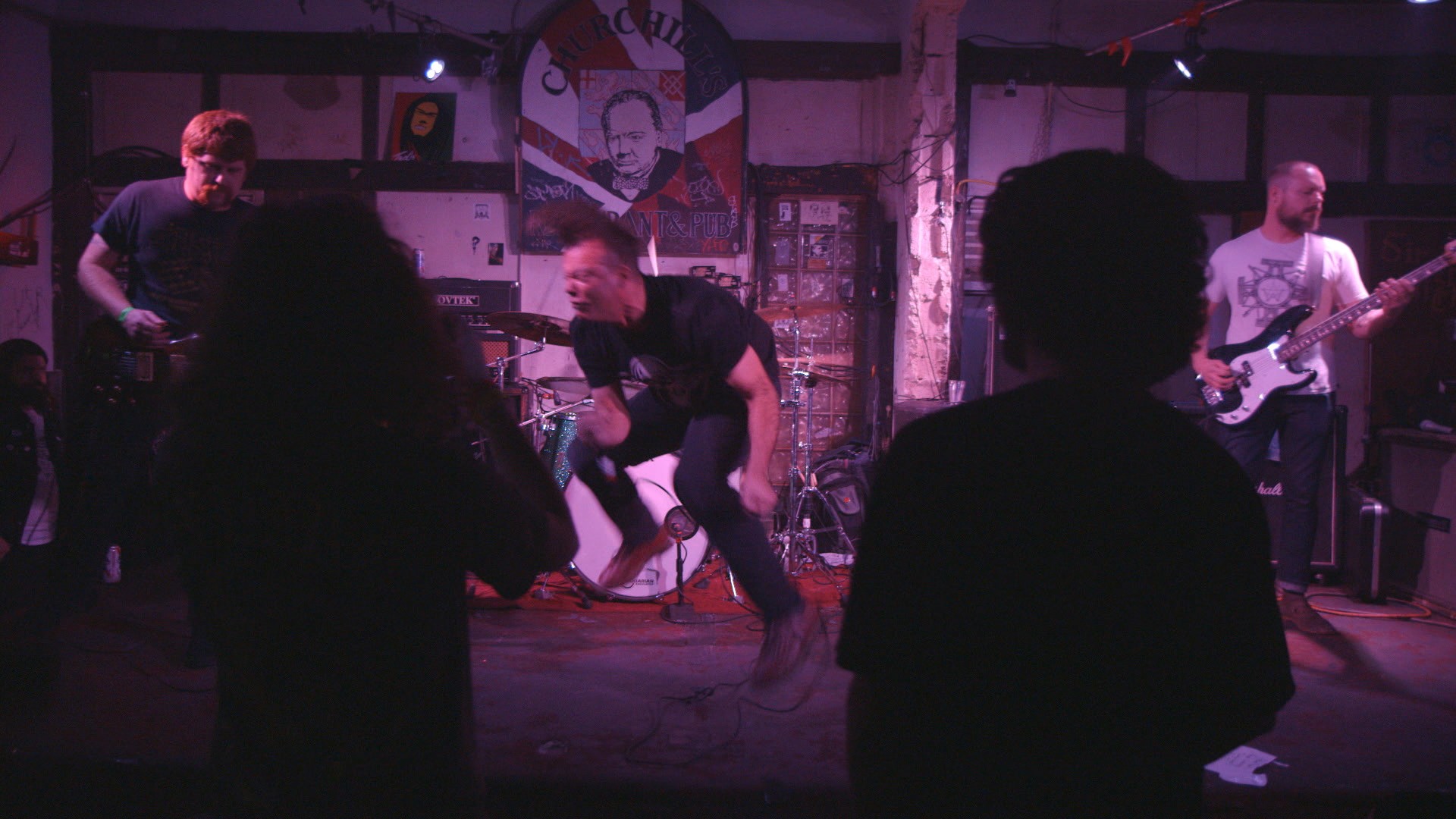In 1992, photographer Jill Freedman felt something uncivil in the New York air. The city she loved was becoming mean, its offbeat characters fading away to sleeker streets with higher real estate values. Weary after bouncing back from breast cancer, the photographer decided to move to Miami Beach. Among the neighborhoods and leisure spots in the limestone city, she sought a place that still had personality and would be a warm escape for reading and just getting away. For the next decade or so, she found it.
Advertisement
These photos of South Florida include snaps of a nondescript man working the box office of an adult movie theater, wild flirtations on South Beach, beautiful, aging burlesque stars who reminded Freedman of Greek goddesses, and a gospel pastor bleeding songs into a microphone. Her experiences were new, but Freedman's faith in Miami Beach came from fond memories of the city that she had experienced during her childhood.Her father was a traveling salesman who suffered from a stomach condition, so her mother would often join him on the road. Freedman usually wasn't allowed to go, which contributed to her parents' decisions to send her away to boarding schools and summer camps. But one summer, when she was ten, she had her appendix removed and couldn't go to camp. Instead, she and her parents went on a vacation to Miami Beach that would forever enshrine in her a sense of the city's good times.
The family stayed at the Raleigh Hotel, where Jill made a friend from Havana named Nilda Garcia. Freedman and Garcia would swim in the area's hotel pools. To them, simply swimming all day was heaven. They were also treated to a technological marvel when they went to a nearby movie night at the Shelborne's satin dining room. The hotel suspended a big bed sheet and projected a movie onto it—an experience that was extraordinarily intimate for the time.Best of all, Freedman's father took her out in the ocean with him. Freedman was lit up by the energy in the water. She was from landlocked Pittsburgh, so the ocean awed her. On the way to and from the city, her parents were upset because she wasn't watching out the window, looking at and learning from the different parts of the country going by. Instead, she reclined with her feet up, reading comic books, but paid attention when they stopped for what would become one of her favorite foods ever: Georgia pecans.
Advertisement
When Freedman returned all those years later, it would be with these fond memories in mind. She had visited a Florida that was more urban than the one captured in the modern portraits of Melanie Metz, but it was dreamlike all the same. Returning to Miami Beach to live, Freedman picked her apartment partly because the Raleigh, where she had stayed as a girl, was across the street. Another draw was that the apartment complex looked like a 60s motel, a mix of tacky and classy that referenced earlier eras. When reporter Judy Cantor profiled Freedman for the Miami New Times in 1996, Freedman recalled "the glamorous showgirls, the elegant guests, the retirees dancing in Lumus Park on Ocean Drive," and said, in returning to Miami Beach, she had expected it would be home to the same mix of different groups enjoying themselves that she had once taken in.
Returning to Miami Beach to live, Freedman picked her apartment partly because the Raleigh, where she had stayed as a girl, was across the street. Another draw was that the apartment complex looked like a 60s motel, a mix of tacky and classy that referenced earlier eras. When reporter Judy Cantor profiled Freedman for the Miami New Times in 1996, Freedman recalled "the glamorous showgirls, the elegant guests, the retirees dancing in Lumus Park on Ocean Drive," and said, in returning to Miami Beach, she had expected it would be home to the same mix of different groups enjoying themselves that she had once taken in.

As she made herself at home, Freedman saw signs of chic changes happening in the city, like models and advertising productions posted up at the Raleigh, but also still found color and a down-to-earth vibe. It was a similar appeal to what she had found thrilling in her former home in New York's West Village in the 1970s.In its overlap between astronomical wealth, tackiness, seediness, the elderly, celebrities, homeless, and different ethnic groups, all in an environment that did not require tons of money to exist in, she found a similar recipe to the one she had previously adored. When she wasn't by herself reading books from the library, Freedman walked the streets, or went on assignment to familiarize herself with the churches, the people who slept on the beach, and the concerns of residents as they attended parades and protests.
Advertisement
Her arrival in the city amounted to a decade-long residency. By the end of her stay, as had happened in New York, property values had gone up, and an increased cost of living had remolded the sunny vibe. "It was like losing the village all over again," Freedman says now, looking back. "The old neighborhoods disappeared as the old people were pushed out. The old people were a lot more interesting, a lot more fun." Higher housing prices meant that the population that could afford to live there narrowed its demographic. The photographer adapted by returning to New York, drawn to the parts of its creative pulse that still remained. The characters she had met likely adapted in their own ways. It's not a stretch to consider that Miami Beach, with its history of segregation and varied phases of commercial development, has probably had exclusivity at its core for ages. But if some parts of the city did operate with less of a paywall up until real estate values soared, Freedman's photos here are a record from a prior era, a collection of different stripes simply making their way in the sunny idyll.
Jill Freedman's works are included in the permanent collections of the Museum of Modern Art, the International Center of Photography, and the George Eastman Museum, among others. With photographic interests in both social science and humanism found in the streets, she makes regular posts to her Instagram account @jillfreedmanphoto and is represented by Steven Kasher Gallery, New York. In the future, Freedman intends to publish more photo books to augment the seven she has released to date, including Firehouse and Street Cops, which are featured in Cheryl Dunn 's 2013 documentary on street photographers, Everybody Street.
